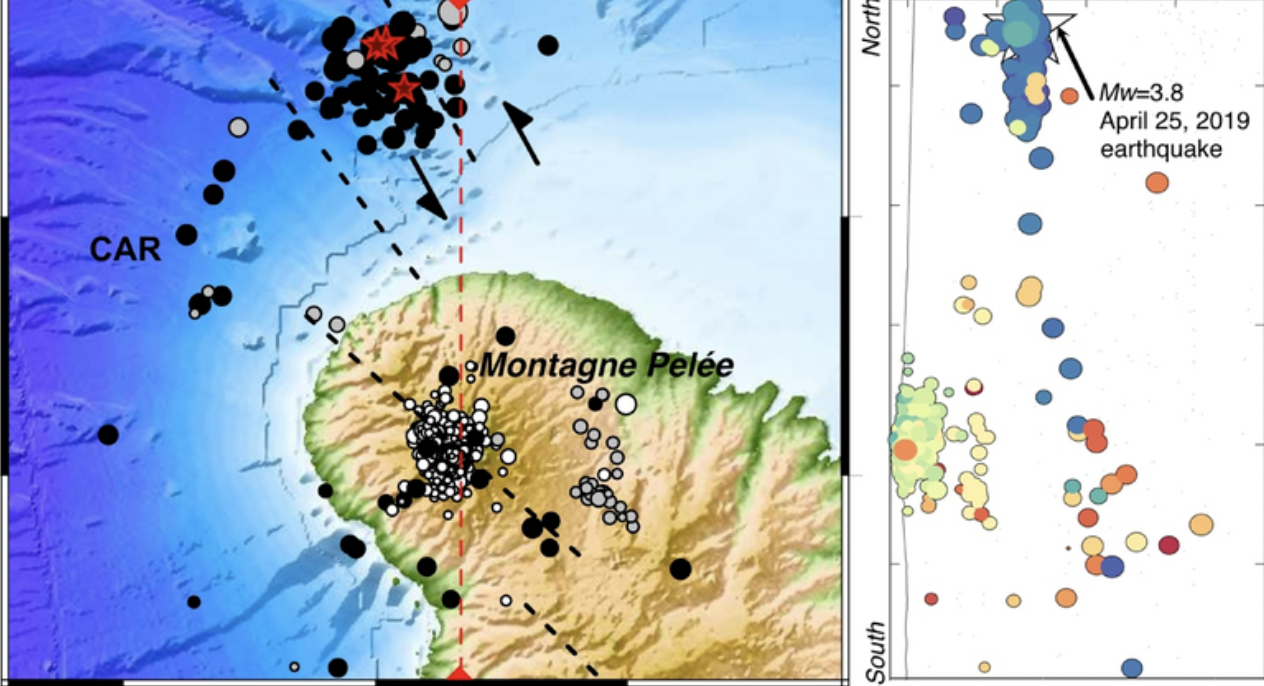Autor Ckelar: Manuel Inostroza.
Otros autores: F. R. Fontaine, J.-C. Komorowski, J. Corbeau, A. Burtin, J.-B. de Chabalier, R. Grandin, J. M. Saurel, P.Agrinier, S. Moune, F. Jadelus, D. Melezan,
J.-G. Gabriel, C.Vidal, B. Zimmermann, D. Vaton, J. Koziol, J. M. Lavenaire,
R. Moretti, A. Lemarchand, T. Labasque, P.-H. Blard, B. Tibari, L. Zimmermann,
C. Aubaud, J. Vergne, A. Andrieu, A. Filliaert, E. Chilin-Eusebe, S. Z. Wahlgren, J.-P. Métaxian, A. Potier, I. Fernandez, V. Robert, S. Deroussi, G. Carazzo, S. Tait, I. Vlastelic, D. E. Jessop, S. Bonaimé, A. Le Friant, M. Chaussidon, A. Michaud-Dubuy, L. Retailleau, A. Di Muro, P. Allard y C. Satriano.
Revista científica: Scientific Reports.
Abstract
Abstract Multiparameter volcanic unrest has been recorded since April 2019 on the Montagne Pelée volcano located on Martinique. There have been only very few periods of seismic unrest since the last magmatic eruption of 1929−1932. This is therefore a rare opportunity to examine its origin. In April 2019 the number of shallow volcano-tectonic (VT) earthquakes increased drastically above the reference monthly rate of 19 VT/month and then exceeded it consistently for several months. Deep (> 10 km) VT events occurred at the onset of the unrest and harmonic tremor was first recorded in November 2020. Continuous Global Navigation Satellite System data reveal that a minor horizontal deformation began around mid-2021. The modeling of these data favors an inflation source located at about 1 km below and slightly SW of the summit, in the area of the hydrothermal system and where most of the shallow VT events are located. Zones of degraded and dead vegetation on the upper flanks of Montagne Pelée were detected with satellite imagery starting in November 2019 and shown to be associated with elevated passive CO 2 soil degassing. This protracted unrest most likely reflects the ascent of a limited volume of deep magmatic fluids that reinvigorated the shallow hydrothermal circulation.
Full paper here.

